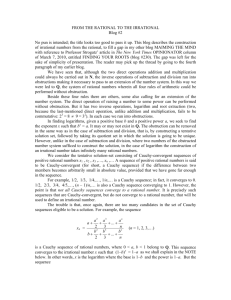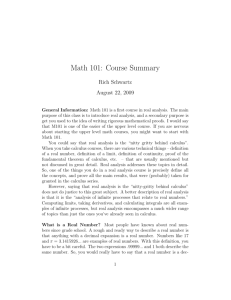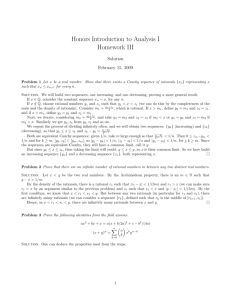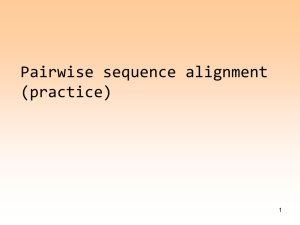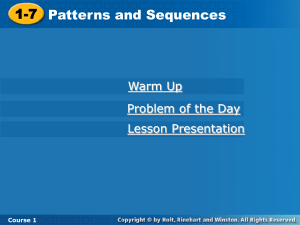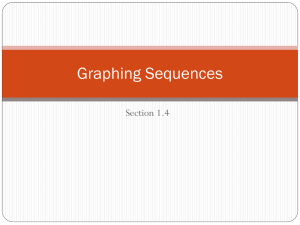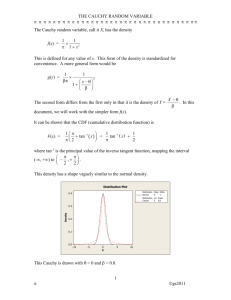Natural, Integer and Rational numbers
advertisement
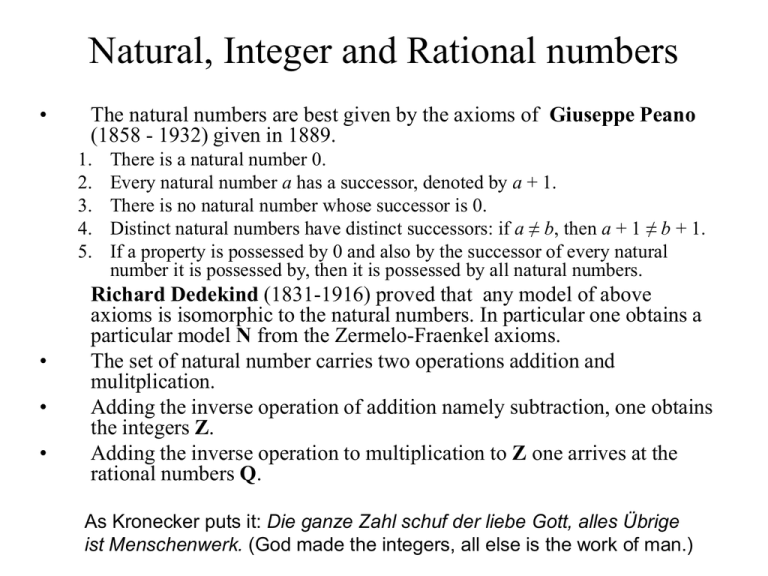
Natural, Integer and Rational numbers
•
The natural numbers are best given by the axioms of Giuseppe Peano
(1858 - 1932) given in 1889.
1.
2.
3.
4.
5.
•
•
•
There is a natural number 0.
Every natural number a has a successor, denoted by a + 1.
There is no natural number whose successor is 0.
Distinct natural numbers have distinct successors: if a ≠ b, then a + 1 ≠ b + 1.
If a property is possessed by 0 and also by the successor of every natural
number it is possessed by, then it is possessed by all natural numbers.
Richard Dedekind (1831-1916) proved that any model of above
axioms is isomorphic to the natural numbers. In particular one obtains a
particular model N from the Zermelo-Fraenkel axioms.
The set of natural number carries two operations addition and
mulitplication.
Adding the inverse operation of addition namely subtraction, one obtains
the integers Z.
Adding the inverse operation to multiplication to Z one arrives at the
rational numbers Q.
As Kronecker puts it: Die ganze Zahl schuf der liebe Gott, alles Übrige
ist Menschenwerk. (God made the integers, all else is the work of man.)
•
•
The
real
numbers
Real numbers are commonly associated to the points on a line. Another way to
think of them is as the limit of rational numbers or nested intervals. Both
observations lead to definitions of the reals starting from the rationals. The
important property here is that the sequence of nested intervals need not converge
in Q.
Axioms for the real numbers:
1. The set R is a field, i.e., addition, subtraction, multiplication and division are defined
and have the usual properties.
2. The field R is ordered, i.e., there is a linear order ≥ such that, for all real numbers x, y
and z:
3. if x ≥ y then x + z ≥ y + z;
4. if x ≥ 0 and y ≥ 0 then xy ≥ 0.
5. The order is Dedekind-complete, i.e., every non-empty subset S of R with an upper
bound in R has a least upper bound (also called supremum) in R.
•
•
Dedekind defined the real numbers via so-called cuts
A Dedekind cut is a subset a of the rational numbers Q that satisfies these
properties:
1. a is not empty.
2. Q \ a is not empty.
3. a contains no greatest element
4. For x,y in Q if x in a and y < x , then y is in a as well.
•
Real numbers can then be defined as the set of Dedekind cuts.
The real numbers as Cauchy sequences
•
•
•
Cantor defined the real numbers through Cauchy sequences.
A Cauchy sequence of rationals is a sequence rn in Q indexed by the natural
numbers N, such that for any rational e there is a natural number N s.t.
|rm-rn|<e for all m, n >N
Cauchy sequences (xn) and (yn) can be added, multiplied and compared as follows:
– (xn) + (yn) = (xn + yn)
– (xn) × (yn) = (xn × yn)
– (xn) ≥ (yn) if and only if for every ε > 0, there exists an integer N such that xn ≥ yn - ε for
all n > N.
•
•
•
•
Two Cauchy sequences (xn) and (yn) are called equivalent if such that for any
rational e there is a natural number N s.t.
|xn-yn|<e for all n >N
The real numbers are now defined to be equivalence classes of rational Cauchy
sequences.
The real numbers are then complete, i.e. all Cauchy sequences of real numbers
converge.
Lastly one can use the decimal expansion, which essentially selects a representative
for each class, with the proviso that some reals have two decimal expansions which
are equivalent, e.g. 1.0000 … = 0.99999… .
Hyperreal numbers
• In order to make sense of infinitesimals one should think of them as sequences
of real numbers (xn).
• we can also add and multiply sequences: (a0, a1, a2, ...) + (b0, b1, b2, ...) = (a0 +
b0, a1 + b1, a2 + b2, ...) and analogously for multiplication.
• Hyperreals are defined as equivalence classes of sequences of reals.
• Two sequences will be equivalent is there difference has infinitely many zeros.
• It turns out, this is not enough, though to get multiplication and an order. In
technical detail the slightly larger equivalence is given by an so-called
ultrafilter U on the natural numbers which does not contain any finite sets. Such
an U exists by the axiom of choice. One can think of U as singling out those
sets of indices that "matter“ when comparing two sets: We write (a0, a1, a2, ...) ≤
(b0, b1, b2, ...) if and only if the set of natural numbers { n : an ≤ bn } is in U.
This is a total preorder and it turns into a total order if we agree not to
distinguish between two sequences a and b if a≤b and b≤a.
• *R is then given by sequences in R modulo the above equivalence.
• *R has addition, subtraction multiplication, and divison.
• The real numbers are the subset given by the constant sequences (r,r,r..)
This construction is unique if the continuum hypothesis holds
Inifitesimals
• *R contains the finite numbers, F={*r in *R| |*r|<r for some r in R}
• An infinite number is e.g. given by the sequence (1,2,3,4,….)
• *R contains the infinitesimal numbers. Infinitesimals = {*r in *R|
|*r|<r for all r in R}
• An infinitesimal is given by the sequence (1,1/2,1/2,1/3, …)
• Each finite hyperreal *r has a unique standard part st(*r) which is
defined to be the unique number s.t. *r-st(*r) is infinitesimal.
• Given a function f: R→R, it has a unique extension *f to *R given by
*f (a0, a1, a2, ...) :=(f(a0),f(a1),f(a2), ...)
• Also one writes x≈y if x-y is infinitesimal
• In this notation f is continuous if *f(x+h)) ≈f(x) for all infinitesimals h.
• Fix an infinitesimal dx then
– df(x):= *f(x+dx)-f(x)
– df(x)/dx= (*f(x+dx)-f(x))/dx is always defined in *R, if it is finite for all
reals x and all infinitesimals dx then f is differentiable and df(x)/dx≈f’(x).

